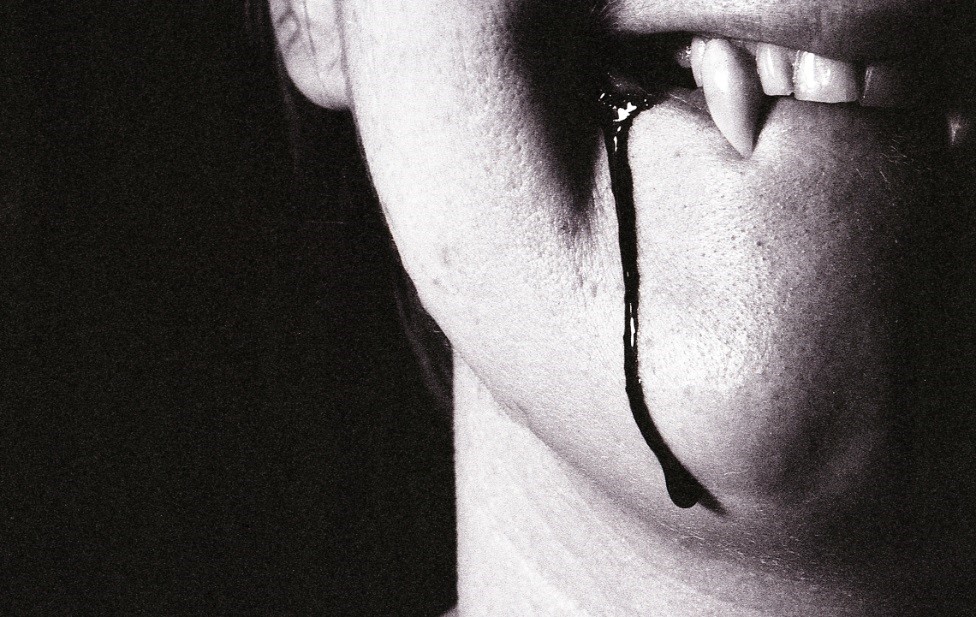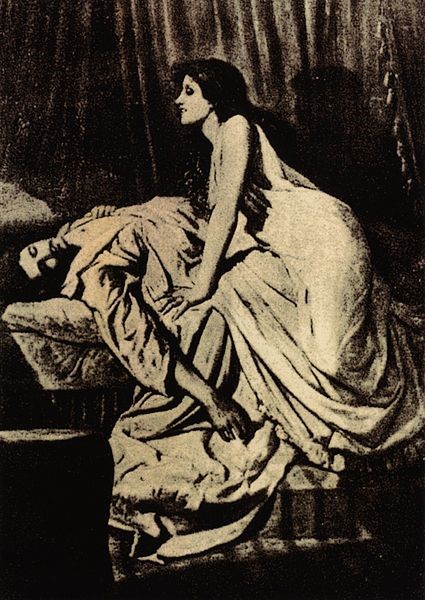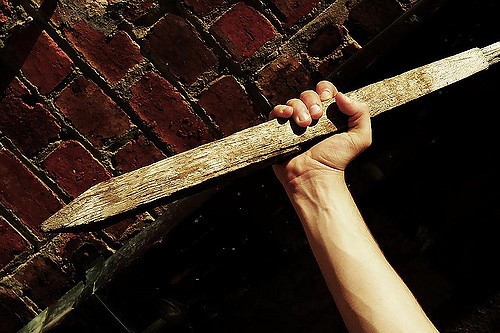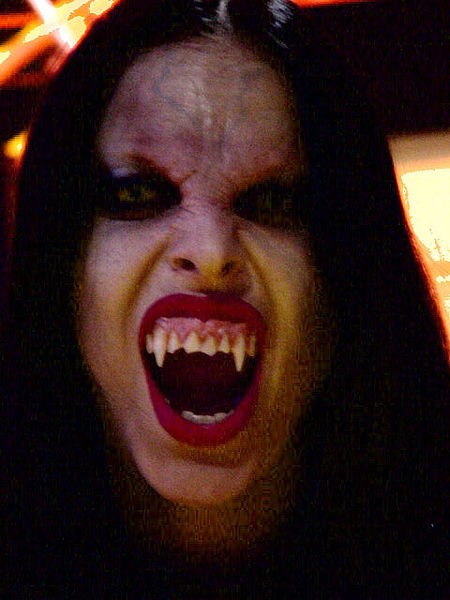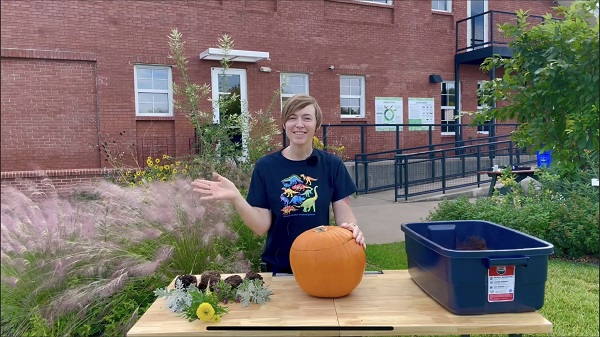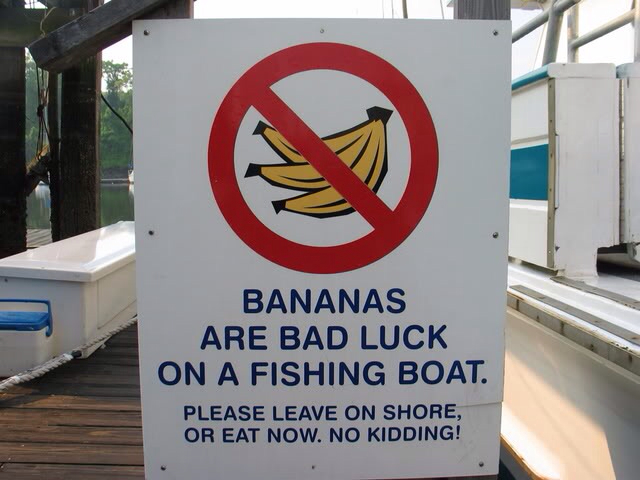Warning: Hyperlinks may lead to images that are offensive to some people. May not be safe for work.
Vampires have been known by many names throughout history. Whether feeding on blood, the biological life-force, or physic energy, the life-force of the soul, they have both frightened and fascinated us for millennia. One can find variations on the vampire in all cultures throughout history.

The first major film of the vampire myth was FW Murnau’s Nosferatu – Bram Stoker’s widow sued for copyright infringement over its similarity to Dracula (Credit: Film Arts Guild)
The classic Western concept of the bloodsucking vampire is more correctly known as the revenant. A revenant is an individual, reanimated after death, who returns to terrorize the living. They were often associated with the spread of deadly diseases, such as the Plague, and the early deaths of former friends and family members. The revenant is Slavic in origin and became a prevalent character, residing in the collective psyche, during the Middle Ages.
It was thought that revenants fed on blood. Writings exist that support this idea, such as this description from the Historia rerum Anglicarum (1196–98; “History of English Affairs”): The corpse of a suspected revenant was observed in the grave, “swollen” and “suffused with blood”. When pierced, a stream of blood flew out of the wound.
It is now believed that what was interpreted as the dead revivifying was in fact the natural process of decay that occurs after death. The most common attributes of the undead, according to vampire hunters of the past, were the following:
- The body looks well-nourished, a sign the deceased was feeding on blood
- The skin looks new, moist, and healthy and has a ruddy color; the opposite of the pallor of death
- Blood flows from the nose and mouth and the body bleeds when cut, as if alive
- Hair and nails have continued to grow and fangs are apparent
- The body moves, groans, and farts
All of the above identifiers can be explained by various phenomenon caused by decomposition.
The body looks well-nourished, a sign the deceased was feeding on blood – This is, in all likelihood, attributable to the buildup of gasses produced by bacteria as they break down tissue. These gasses cause the body to bloat and swell, giving the false impression that the deceased has been feeding, perhaps on the living.
The skin looks new, moist, and healthy and has a ruddy color; the opposite of the pallor of death– Skin slippage occurs as the outer layer of skin separates from the deeper layers. This is the result of fluids, produced by putrefaction, building up in the space between the layers. As a result, blisters form causing the skin to slip off or “shed”. This can leave pinkish “healthy” looking skin in its place. In addition, as blood pools, as a result of the lack of circulation, it can give the skin a red or ruddy appearance. We call this liver mortis, which produces a very different look than paleness of the newly dead or dying.
Blood flows from the nose and mouth and the body bleeds when cut, as if alive– Blood flowing from the nose and mouth was considered proof that the corpse has risen to feed on the blood of the living. In reality, leakage of fluid occurs from all orifices after death, this is known as purge. This is a result of the digestion and decomposition of the body’s tissues. Dead bodies can be leaky, simple as that. This propensity to leak, along with bloating, also explains why suspected vampires appeared to bleed when cut. The fluids are propelled out by gasses, as if being pumped by a beating heart.
Hair and nails have continued to grow and fangs are apparent– We now understand that this is an illusion produced by the shrinking of the skin around the base of the nails and tiny erector muscles in the scalp that cause hairs to stand on end. The appearance of “fangs”, common to vampires, can also be explained by the shrinking of the gums tissue caused by the loss of moisture. As the gums pull away from the teeth, the canine teeth can appear quite pronounced.
The body moves, groans, and farts – The unsettling movement and noises made by the dead are also a direct result of decomposition. The buildup and release of the gasses produced by decomposition can cause movement, which is sometimes quite dramatic. It goes without saying, that any gas expelled from a body, be it living or dead, sounds like a fart or at the very least a very unsettling groan or growl!
Well, hopefully you have learned a little about the process of decomposition or at the very least, how to identify a potential vampire. It is understandable why one could assume the dead were now living, without an understanding of decomposition. The persona of the vampire has morphed and traveled in new directions as the Middle Ages came to a close, and a new way of seeing the world through the lens of science began to take hold. Check back soon to discover how to protect yourself from the undead. Don’t say we’ve never done anything for you!!
Coming in 2018: Lab on Demand: The Scientific Origins of Monsters and Mythical Creatures-2 class series (Each class is standalone) Contact 713-639-4625 for more information.
- Monsters – There is no such thing as monsters! … Or is there? Monsters have frightened and fascinated us for millennia, but is there a scientific explanation for some of history’s most fearful creatures? Delve into the history behind vampires, werewolves, zombies, and more.
- Mythical Creatures – The human imagination combined with the natural world have inspired the creation of a legion of mythical creatures that populate human history. Inspired by living animals and even fossils, we can catch a glimpse of the natural world in many of these magical creatures. Explore amazing creatures from the Kraken, to dragons, and beyond on a fantastical journey into history.


